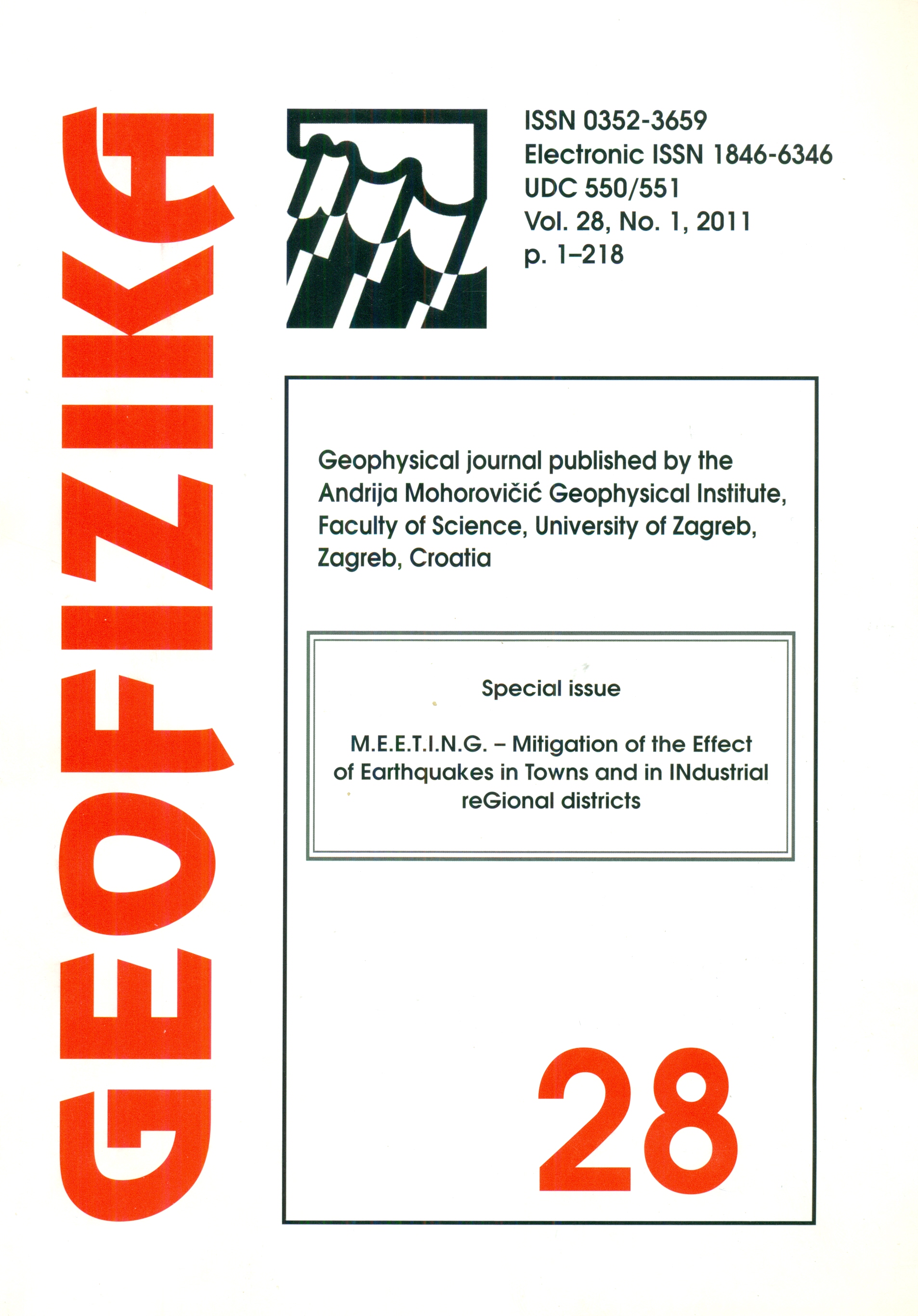Ground structure and its seismogeological characteristics influencing local seismic effects of the 1998 and 2004 Upper Posočje earthquakes in Slovenia
Keywords:
earthquakes in NW Slovenia, European Macroseismic Scale, Eurocode 8, ground types, earthquake damage assessment, forecast of local seismic effectsAbstract
In 1998 and 2004, two strong earthquakes shook the NW region of Slovenia. On the basis of a detailed inventory, the damages to structures were classified into five damage grades, defined in accordance with the European Macroseismic Scale (EMS). After both earthquakes, extensive geological and geophysical investigations were carried out, including geological mapping, the excavation of 60 pits, drilling of 20 boreholes down to depths of 20 m, seismic measurements, geo-electrical measurements and seismic microtremor investigations. Since 1990, local seismic effects in Slovenia have been addressed through consecutive rules covering static calculations for the structures being built; the first of these rules was the old Slovenian regulation (Uradni list SFRJ 31/81), and the other two were the last Eurocode 8 (EU8-94 and EU8-SIST EN 1998-1:2005) regulations.
In this report, we describe studies on how local ground conditions increase seismic effects on structures. On the basis of mentioned data in previous paragraph, we attempted to establish how reliably this influence can be defined. A forecast of local seismic effects was compared with actually established damage to structures. A statistical analysis was conducted in 27 selected areas (settlements) with similar geological conditions.
Through a comparison of ground-type impact assessments performed using geological mapping and drilling, geo-physical measurements and measurements of microtremors with actually established damage to structures, it was found that forecasts were more reliable if they were made with proper consideration of all relevant factors together. However, despite implementing forecasts using this type of multidisciplinary approach, the forecasts for some areas can be completely incorrect in terms of seismic effects. The best forecast was found to be produced using the last EU8 (EU8-SIST EN 1998-1:2005), while the old Slovenian (Uradni list SFRJ 31/81) and first EU8 (EU8-94) regulations produce less reliable results.
Downloads
Published
Issue
Section
License
Copyright (c) 2021 Geofizika journal

This work is licensed under a Creative Commons Attribution-NonCommercial 4.0 International License.

